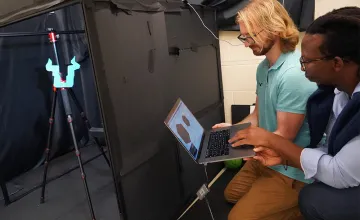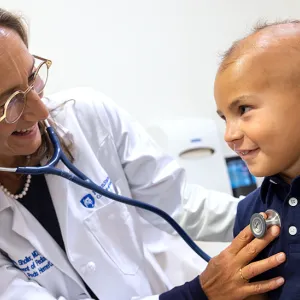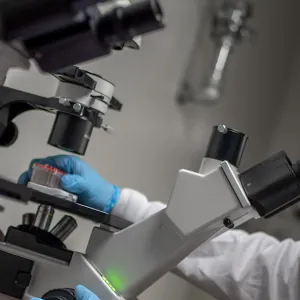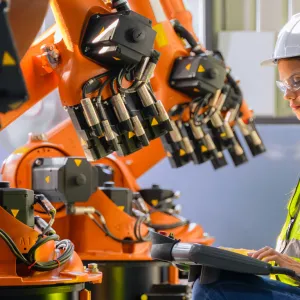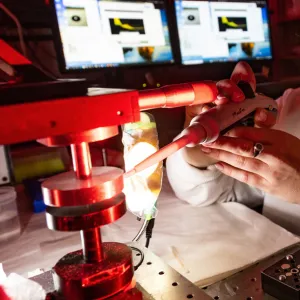America’s leading research universities...
are developing new technologies for our warfighters on the battlefield, strengthening our national defense.
Innovating to Give Our Nation a Technological Advantage
Federally funded university research has led to the development of important tools that support our military and national security, including GPS, lithium batteries, night-vision goggles, explosive sensing, translation devices, and more.
Conducting Scientific Research for the Department of Defense
More than half of the Defense Department’s University-Affiliated Research Center Laboratories (UARCs) are partnered with America’s leading research universities.
The department's 15 total centers, located at research universities across 13 states and the District of Columbia, provide our uniformed service members with leading-edge technological and scientific expertise to help solve complex and challenging problems that they face both on and off the battlefield. The research universities help the armed services meet special long-term engineering, research, development, and analytic needs that can't be met as effectively by government or other private-sector entities. Nine of these centers are partnered with America's leading research universities:
- The center at the University of Maryland uses scientific rigor to tackle 21st century intelligence and security challenges in the human domain for the Department of Defense (DOD) Office of the Under Secretary of Defense for Intelligence and Security, including human and social systems; intelligent human-machine systems; as well as advanced computing and emerging technologies to enable asymmetric advantage for our warfighters. To advance its mission areas, the center's expanded talent base of partners includes research universities from Missouri, Arizona, California, New Mexico, Texas, South Carolina, Tennessee, Virginia, the District of Columbia, Illinois, and Wisconsin.
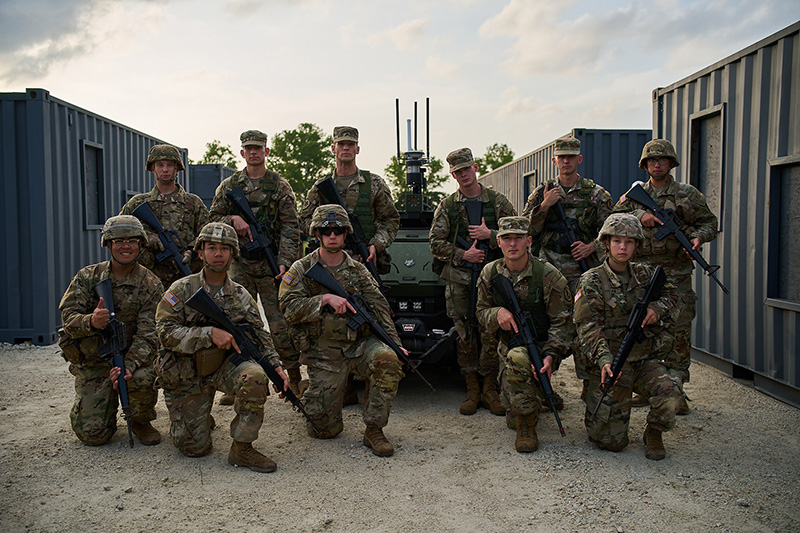
- The center at the University of Washington conducts oceanographic research to help the U.S. Navy understand how deep ocean variability affects its systems. The Applied Physics Lab-UW's scientists and engineers pursue advances in acoustic and remote sensing; ocean physics and engineering; medical and industrial ultrasound; polar science and logistics; environmental and information systems; and electronic and photonic systems.
- The center at the University of Texas at Austin advances groundbreaking applications and state-of-the-art equipment for the Navy in high-resolution sonar and undersea surveillance; satellite navigation and atmospheric tomography; and cybersecurity and information systems analysis. The center's independent research also enables it to develop and prototype technology solutions for the military and intelligence communities.
- The center at Penn State, while maintaining core technology capabilities of critical importance to the Navy, also supports the other U.S. Armed Forces. Its cutting-edge expertise in undersea weapons; unmanned underwater vehicles (UUVs); advanced sensors and power and energy systems helps it trailblaze future technologies for undersea operations. At the same time its technological solutions in communications, information, and navigation has led it to develop cyber electromagnetic advantages for U.S. warfighters and operators.
- The center at the Massachusetts Institute of Technology advances nanotechnology innovations that could shape the future of warfighter capabilities, primarily for U.S. Army soldiers, but also for other DOD and government agencies. Specializing in innovative science, engineering, and rapid transitioning in service to our nation's armed forces, its strategic focus areas range from photonics, electronics, and quantum sciences; the sciences of materials for extreme environments; energy sciences, particularly advancements in compact devices that can efficiently generate electric power from heat or light; devices and materials with advanced functionalities; and soldier medicine including both battlefield care as well as hazardous substances detection and protection.
The center at Georgia Tech, with its deep expertise in sensors, information, and systems, helps the Army maintain its edge in critical operational technologies ranging from electromagnetic spectrum operations; intelligence surveillance and reconnaissance (ISR); robotics; cybersecurity, command control, and communication (C3); information and data science; aerospace; air and missile defense (AMD); threat systems analysis; and training, test, and evaluation.
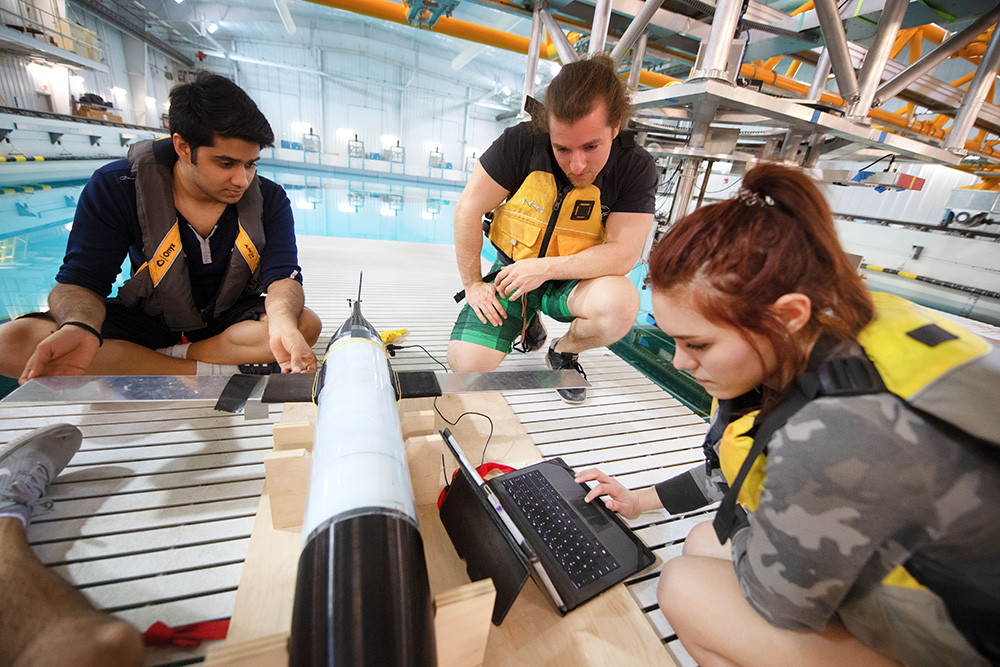
University of Iowa hydrodynamic experts from IIHR and the Office of Naval Research design, build, and test a prototype autonomous underwater glider. Photo Credit: Anne Kent-Miller, University of Iowa - The center at the University of Southern California harnesses Hollywood-derived creativity with academic innovation and military-domain expertise for the Army, giving military subject matter experts the opportunity to work with scientists and artists to expand how military service members engage with technology. Its researchers innovate new teaching, training, helping, and healing solutions involving AI, computer graphics, geospatial sciences, human performance, learning sciences, mathematical modeling, simulation and gaming, mixed reality (MxR), Medical VR, and virtual humans. Its immersive prototypes are designed to help users improve decision-making, leadership, and coping skills. This results in prototypes that then transition into the hands of the warfighters they are designed to support.
- The center at the University of California, Santa Barbara spurs biologically inspired technological innovations for the Army in systems and synthetic biology, biologically enabled materials, and cognitive neuroscience. Partnering with scientists from MIT and Caltech, the collaborative interdisciplinary teams of biologists, chemists, physicists, psychologists, and engineers are led by premier faculty together with graduate students and postdoctoral researchers.
- The center at the Johns Hopkins University creates a broad variety of technologies and innovations for the Navy as well as the other U.S. armed forces to protect our warfighters and the homeland; enable teamwork between people and machines; expand the limits of computing power; and tackle increasingly difficult military challenges across multiple domains. Within its 13 mission areas, the center advances new technology capabilities to aid our warfighters in air and missile defense; AI and machine learning; bioengineering; cybersecurity; communications systems; hypersonics; intelligence, surveillance and reconnaissance (ISR) systems and technology; next-generation materials for hypersonic flight and naval ship construction; space science and engineering; and systems engineering. Over the years, the center's researchers have contributed numerous crucial technological innovations adding to U.S. military and space capabilities since its founding during World War II.
The Department of Defense also supports Federally Funded Research and Development Centers (FFRDCs) at the Massachusetts Institute of Technology (MIT) and Carnegie Mellon University that help provide our military servicemembers with state-of-the-art technological advances and expertise:
- The center at the Massachusetts Institute of Technology quickly prototypes and transfers advanced technologies to meet critical national security needs of the U.S. Air Force and other DOD agencies. Established in 1949 to develop America’s first air defense system, the center continues to provide air and missile defense support by creating advanced radar systems and advising at the Ronald Reagan Ballistic Missile Defense Test Site. The center has also pioneered space systems and technologies that have enabled the U.S. Space Force to better monitor objects in space and improve space communications.
- The center at Carnegie Mellon University conducts research and drives innovations in software engineering, cybersecurity, and artificial intelligence to enhance our national security. The center has recently helped DOD streamline its software acquisition process, improve its cybersecurity practices, and make its artificial intelligence systems more secure.
Carnegie Mellon University is also preparing DOD for a rapidly changing battlefield with its National Robotics Engineering Center (NREC). NREC’s Robotics Academy recently conducted training programs to give U.S. Navy sailors hands-on experience working with various autonomous systems and certain kinds of artificial intelligence. Participating sailors escalated their expertise through the CMU training’s “increasing levels of complexity, starting with building simple circuits and progressing to troubleshooting and deploying AI-assisted drones and ground vehicles.”
Strengthening Our Soldiers and Veterans
The University of Pittsburgh revolutionizes care for our servicemembers and veterans by leveraging its expertise in military medicine, assistive technology, and regenerative medicine.
- The McGowan Institute for Regenerative Medicine produces innovative solutions in tissue engineering, cellular therapies, and medical devices to improve the quality of life for patients suffering with organ and tissue failure. McGowan researchers pioneered a new treatment that derived an extracellular matrix—a web of macromolecules that support surrounding cells—from a pig’s bladder and implanted it at the site of an injury to promote tissue regeneration. This revolutionary treatment offers hope to servicemembers that have been injured by explosives and have limited options other than amputation.
- Researchers at the Neuromuscular Research Laboratory/Warrior Human Performance Research Center recently performed analyses of the bone health, physical performance, and movements of U.S. Marines during officer training to find ways to prevent injuries and ensure military readiness.
- Researchers at the Human Engineering Research Laboratories—a partnership between Pitt’s School of Medicine and the U.S. Department of Veteran Affairs—harness cloud technology, AI, sensor fusion, and other innovations to create advanced wheelchair technologies and mobility devices that empower wounded former servicemembers and others with disabilities to live uninhibited lives.
Federal Funding Makes It Possible
This critical research on behalf of our nation's warfighters would not be possible without funding from the Department of Defense. America's leading research universities are asked to conduct well over half (67%) of the academic research funded by DOD.
Find out more about how America's leading research universities are developing new technologies for our warfighters on the battlefield and strengthening our national defense:



